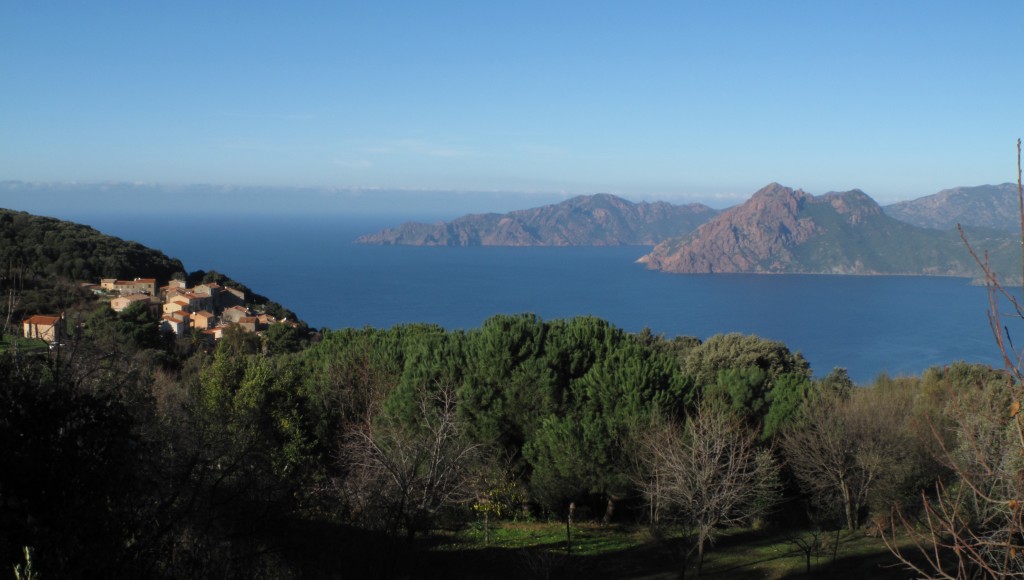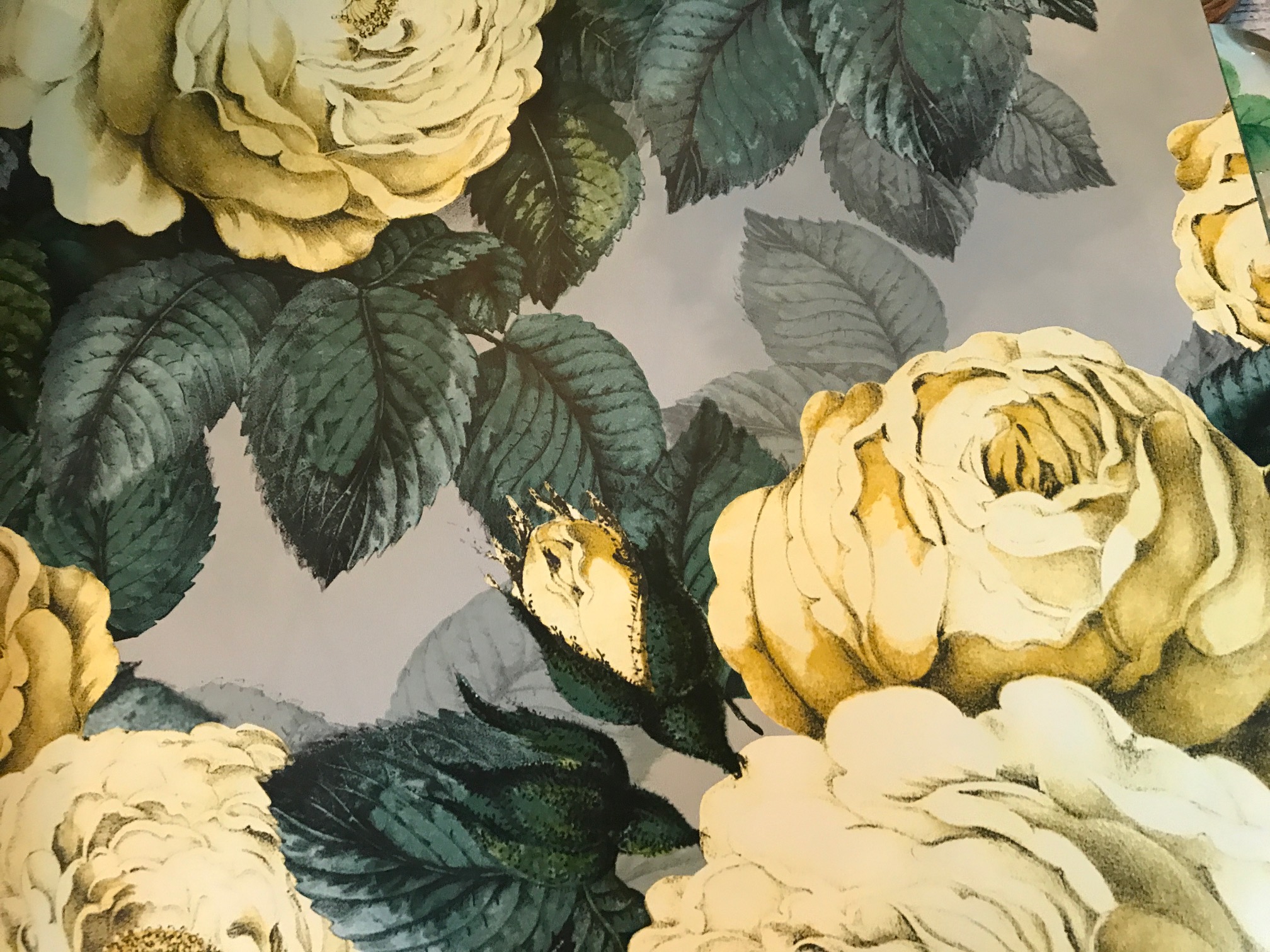
There is a Corsican saying:
“If you live in Corsica, when you die and go to Paradise,
you will be disappointed.”
Black and green schist, red and white granite, snowcapped peaks, mountain slopes
dense with pines, ancient olives and tangled bush, marine-rich turquoise water.
An infinity of bays.
The Greeks called it Kalliste, “the most beautiful.”
At 180 kilometers long and 80 kilometers wide, with three geological zones that take you from the black and green schists of the Maritime Alps, through gorgeous orange granites peaking and folding in sculptural magnificence, to the white granites and limestones of the south, Corsica is probably the most physically beautiful island I have ever visited. The rock rises to 2800 meter peaks that, from December to April, can be capped in snow (there is one small ski station on Corsica). The slopes are draped in a thick green vegetation and drop, at times precipitously and, at others, gradually, to a coastline of bays and harbors, white, brown and black sand beaches, crystal, pristine Mediterranean water. Lobsters have been fished off the tip of Cap Corse since Roman times; terraced vineyards are bringing back delicious wines; ancient olive trees, left to drop their black, mature olives, produce a special, sweet oil. Goats, pigs and wild boar wander the island, producing the fromage blanc and the cured meats that are only truly fresh in December and January.
The 400,000 who live on Corsica swell to 2 million in the summer season. But even with this five-fold increase, the island is spare and feels huge and empty. Out of season one can drive for miles on the winding roads and encounter only a goat, a wild boar. Swimming off Cap Corse in the north, the loneliness of a day is lightened by the rich marine life that makes snorkeling so rewarding here. ”In season” the tourists arrive and cluster – in St. Florent in the North, Propriano on the West, Bonifacio in the South and Porto Vecchio on the East. ”I am going to the village,” says the dour Corsican, eschewing the sea and the coast for the fresh air and rock girt privacy of his mountain village.
Corsicans are not sea loving people. For 2000 years they have been swept by invaders who came to their shores. Perhaps their inward looking bent and slowness to trust outsiders results from this history. There is one thing that gives me pause in commenting on the Corsican and his feelings about the sea, however, and that is the cemetery. In Corsica, there is an art of dying and the most elaborate, showy examples of this are the mausoleums that populate the island – particularly in the north – and the exquisite positions of these tombs. In each village, as in Olmeti, the cemetery faces outward, always seeming to have the best view of the sea, “the most beautiful” view.
Fiercely proud of their island, it is, ironically, both the threat and the isolation the sea has brought that has marked the island and its people’s character. The isolation has ensured that Corsica remains remarkably pristine and ecologically healthy, both on land and in the sea. The isolation has also made them vibrantly independent and, for a quarter of the population, this independent spirit has fueled a burning passion and fierce fight to separate itself from the motherland, to become independent from France.
Glancing at my neighbor’s newspaper, Corse Matin, on my flight from Nice to Calvi, I read the banner “Trois morts en Haut Corse” – ‘Three dead in Haut Corse.” They say there are more murders per capita in Corsica than anywhere else in France. I’m not sure if this statistic is correct – like kalliste Corse, this could be a slight case of hyperbole. But somehow I doubt it. Corsica IS the most beautiful island I have ever seen, and I think there ARE more murders per capita here than anywhere else in France..perhaps anywhere else in Western Europe. While the violence is, no doubt, of great import to the Corsicans, I am assured it intrudes little on the visitor’s experience.
Yet, yet…the knowledge that three men had been murdered in the north of the island prior to my arrival adds an edge to the place. There is an echo of violence here – or, let’s say, a calling card – wherever you travel on the island. Signs are in French, first, and Corsican, second. Dual language signs tend to escape defilement, but the signs solely in French, spray painted with slogans, tell a different story.
FIF! Fuori I Francesi! Out French!
And then, even more shockingly, the bullet holes rending metal, shredding France’s pride, up the ante. The Most Beautiful Villages of France, the Best Hotels of the World, the starred Michelin Restaurants of the World…France is justly proud of its eye trained in beauty, trained in quality.
Blow it away.
The battle for separatism, with all its issues of rights and privileges, is not something to make light of. It is a compelling subject and the fury of the calling cards, left randomly by the impassioned separatists, are challenges to the visitor to keep eyes open, curiosity sharp, and to ask questions.
 John Derian is a treasure. It's not that there aren't many with talent and vision because there are, the world over. But Derian has other attributes that make him so beloved. His eye is unerring, his sense of scale is perfect, he layers cultures and eras seamlessly in a room. And he is accessible in brick and mortar. His two shops on East Second Street have been haunts for years. One carries the decoupage he designs and constructs locally (and that make the best gifts ever) along with the coveted ceramics of Astier de Villatte. The second Dry Goods store next door showcases quirky antiques, an assortment of vintage furniture, stacks of heavy french linen, Moroccan rugs and soft cotton Indian clothing. Both are small, but intriguing and interesting enough to seduce you on a journey of the senses.
And now, Derian has opened on Christopher Street in a double-windowed storefront of a two-story 18th century house. It's like walking in to another world. Traditional Astier, and the later Derian/Astier collaborative pieces, line the walls from roof to floor of the front room. The back room, wallpapered in his new cabbage rose design and lit by beautiful Balthus-designed standing lamps with parchment shades, offers a living room in which to settle in, thumb through books and albums, and rest the soul.
So, go to shop, or simply go to travel in spirit to another place and time.
https://www.johnderian.com/pages/our-locations"
["post_title"]=>
string(21) "John Derian Goes West"
["post_excerpt"]=>
string(0) ""
["post_status"]=>
string(7) "publish"
["comment_status"]=>
string(4) "open"
["ping_status"]=>
string(4) "open"
["post_password"]=>
string(0) ""
["post_name"]=>
string(21) "john-derian-goes-west"
["to_ping"]=>
string(0) ""
["pinged"]=>
string(0) ""
["post_modified"]=>
string(19) "2018-06-07 09:33:42"
["post_modified_gmt"]=>
string(19) "2018-06-07 13:33:42"
["post_content_filtered"]=>
string(0) ""
["post_parent"]=>
int(0)
["guid"]=>
string(31) "http://lisalindblad.com/?p=8571"
["menu_order"]=>
int(0)
["post_type"]=>
string(4) "post"
["post_mime_type"]=>
string(0) ""
["comment_count"]=>
string(1) "0"
["filter"]=>
string(3) "raw"
}
}
John Derian is a treasure. It's not that there aren't many with talent and vision because there are, the world over. But Derian has other attributes that make him so beloved. His eye is unerring, his sense of scale is perfect, he layers cultures and eras seamlessly in a room. And he is accessible in brick and mortar. His two shops on East Second Street have been haunts for years. One carries the decoupage he designs and constructs locally (and that make the best gifts ever) along with the coveted ceramics of Astier de Villatte. The second Dry Goods store next door showcases quirky antiques, an assortment of vintage furniture, stacks of heavy french linen, Moroccan rugs and soft cotton Indian clothing. Both are small, but intriguing and interesting enough to seduce you on a journey of the senses.
And now, Derian has opened on Christopher Street in a double-windowed storefront of a two-story 18th century house. It's like walking in to another world. Traditional Astier, and the later Derian/Astier collaborative pieces, line the walls from roof to floor of the front room. The back room, wallpapered in his new cabbage rose design and lit by beautiful Balthus-designed standing lamps with parchment shades, offers a living room in which to settle in, thumb through books and albums, and rest the soul.
So, go to shop, or simply go to travel in spirit to another place and time.
https://www.johnderian.com/pages/our-locations"
["post_title"]=>
string(21) "John Derian Goes West"
["post_excerpt"]=>
string(0) ""
["post_status"]=>
string(7) "publish"
["comment_status"]=>
string(4) "open"
["ping_status"]=>
string(4) "open"
["post_password"]=>
string(0) ""
["post_name"]=>
string(21) "john-derian-goes-west"
["to_ping"]=>
string(0) ""
["pinged"]=>
string(0) ""
["post_modified"]=>
string(19) "2018-06-07 09:33:42"
["post_modified_gmt"]=>
string(19) "2018-06-07 13:33:42"
["post_content_filtered"]=>
string(0) ""
["post_parent"]=>
int(0)
["guid"]=>
string(31) "http://lisalindblad.com/?p=8571"
["menu_order"]=>
int(0)
["post_type"]=>
string(4) "post"
["post_mime_type"]=>
string(0) ""
["comment_count"]=>
string(1) "0"
["filter"]=>
string(3) "raw"
}
}